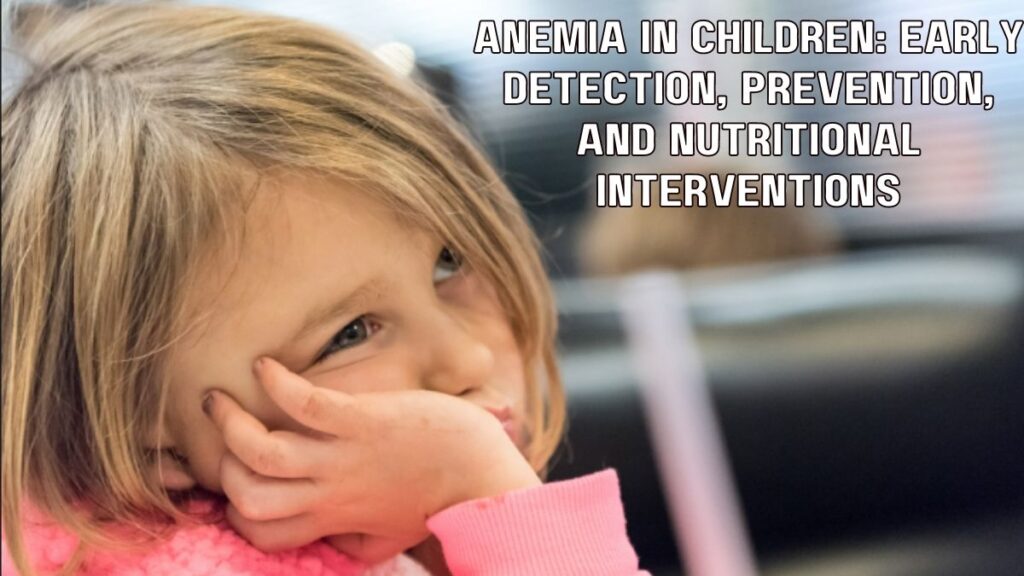Introduction:
Anemia, a condition characterized by a low level of healthy red blood cells, can affect individuals of all ages, including children. Anemia in children can have significant implications for their growth, development, and overall well-being. Early detection, prevention, and appropriate nutritional interventions play a crucial role in addressing anemia and promoting optimal health in children. In this blog post, we will explore the importance of early detection, strategies for prevention, and effective nutritional interventions to combat anemia in children.
1. Understanding Anemia in Children:
a. Causes of Anemia: Anemia in children can be caused by various factors, including inadequate dietary intake of iron or other essential nutrients, insufficient absorption of nutrients, chronic illnesses, genetic disorders, or certain infections.
b. Types of Anemia: Different types of anemia, such as iron deficiency anemia, vitamin deficiency anemia, and hemolytic anemia, can affect children. Each type has distinct causes and requires specific approaches to diagnosis and management.

2. Early Detection of Anemia in Children:
a. Recognizing Symptoms: Symptoms of anemia in children may include fatigue, weakness, pale skin, irritability, poor appetite, delayed growth and development, frequent infections, and difficulty concentrating.
b. Screening and Diagnostic Tests: Regular screenings and diagnostic tests, such as complete blood count (CBC) and iron studies, are essential for early detection of anemia in children. These tests help identify the underlying cause and severity of anemia.

3. Prevention Strategies for Anemia in Children:
a. Promoting a Nutrient-Rich Diet: Encouraging a balanced diet that includes iron-rich foods such as lean meats, poultry, fish, fortified cereals, leafy green vegetables, beans, and nuts can help prevent anemia in children.
b. Vitamin Supplementation: Providing age-appropriate vitamin supplements, particularly iron, vitamin B12, and folate, can help prevent nutritional deficiencies that may lead to anemia.
c. Breastfeeding and Infant Iron Supplementation: Exclusive breastfeeding for the first six months of life, followed by the introduction of iron-rich complementary foods, along with appropriate iron supplementation, can help prevent iron deficiency anemia in infants.
4. Nutritional Interventions for Anemia in Children:
a. Iron Supplementation: In cases of iron deficiency anemia, healthcare professionals may prescribe iron supplements to restore iron levels. The dosage and duration of supplementation should be determined by a healthcare provider.
b. Dietary Modifications: Working with a pediatrician or registered dietitian, parents can make dietary modifications to ensure their child’s diet includes iron-rich foods and other essential nutrients.
c. Education and Counseling: Providing education to parents and caregivers about the importance of proper nutrition, including iron-rich foods, and offering counseling on meal planning and feeding practices can contribute to effective nutritional interventions for anemia in children.
Conclusion:
Anemia in children can have long-term consequences for their growth, development, and overall health. Early detection, prevention strategies, and appropriate nutritional interventions are crucial for addressing anemia in children. Regular screenings, promoting nutrient-rich diets, supplementation when necessary, and parental education play key roles in preventing and managing anemia. By prioritizing the early detection of anemia, implementing preventive measures, and providing adequate nutrition, we can help children thrive and lead healthy lives.

